Castle Provincial Park, in southwestern Alberta, not too far from Montana, is one of Canada’s newest parks, officially approved and designated in February of 2017. Along with its sister park, Castle Wildland Provincial Park, it contains a combined 105,000 ha (405 square miles) of Rocky Mountain peaks, alpine meadows, forests and rolling foothills, and is home to over 200 rare species – including grizzly bears, whitebark and limber pine, and western cutthroat trout.
While not extremely remote – Castle Provincial Park is accessible from both Montana to the south and Calgary to the northeast – it’s far enough and new enough to avoid many of the crowds found in the national parks and destinations closer to the big cities. We especially like making a day trip from Calgary or Lethbridge to Castle, as in summer, the lack of crowds mean that driving is a joy with more solitude than you’d find in Banff.
The Castle region is also a great place to camp for a night or two on a tour of Banff, Waterton Lakes and Alberta’s other national parks (as well as Glacier National Park, across the border in Montana).
Since conservancy is one of the park’s main purposes, most of it is untouched land, with few amenities or developments. It covers much of the old Castle Wilderness, where true Rocky Mountain backcountry abounds.
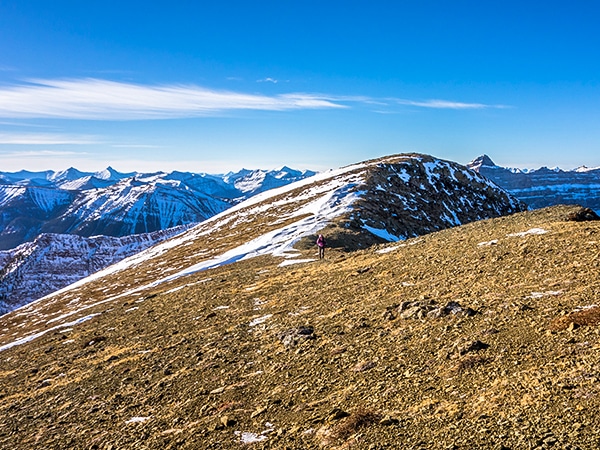
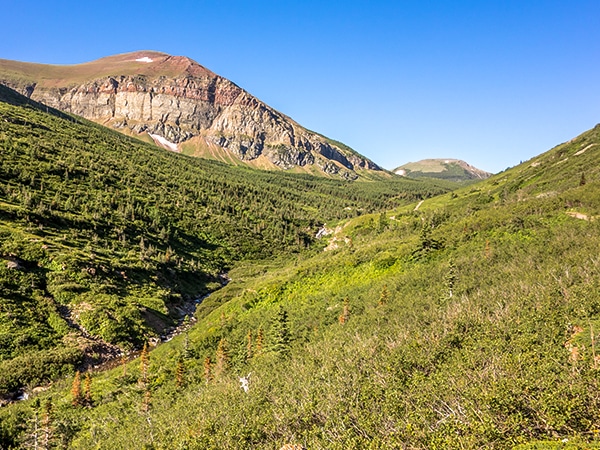
When to Visit Castle Provincial Park
Castle Provincial Park is in the Canadian Rockies, so it’s a great place to visit all year-round. The snowpack usually clears out by early-June in the alpine. You can usually hike from early June through to early-October. This is also about the time you can also enjoy other summer pursuits, like mountain biking, camping, backpacking, fishing and kayaking and more.
Autumn in the Rockies is stunning, as is spring, even if it’s still snowy and wet.
The rest of the year, the park is covered in a deep blanket of snow, so it’s a great destination for fat biking, snowshoeing, winter backpacking, downhill skiing and cross-country ski touring.
How to Get to Castle Provincial Park
By Car: Castle Provincial Park is just about 2.5 hours from Calgary (via AB 2 South and AB-22) and about 1.5 from Lethbridge (take AB-3 West), which is why it’s such a popular destination for weekend warriors. It’s also only about an hour from Waterton (AB-6 North to AB-507), making it a great place to spend the night when heading to or from Banff.
By Plane: The only way to reach Castle Provincial Park is by car, so if you’re flying into Calgary, you’ll need to rent a car and make the drive out. Calgary Airport is a major international hub that can be reached from virtually anywhere in the. Air Canada and WestJet also fly into Lethbridge, but it’s easier and cheaper to fly into Calgary and drive the extra hour.
Where to Stay in Castle Provincial Park?
Castle Mountain Resort is located just southwest of Castle Provincial Park on Highway 774. There’s a bunch of great places to stay around here, from the Castle Ski Lodge – which offers hotel, hostel and vacation home-style places – to some awesome AirBnb rentals (like the Snowed Inn, the High Rustler House or Tom’s Place). Summer is off-season, so it’s very well priced. Even winter is a great deal compared to other ski resorts.
You could also stay in Pincher Creek, about 25 minutes east of the park, in the Albertan prairies. Pincher Creek isn’t as good as staying directly in the mountains, and there isn’t much to do the town itself in terms of tourist activities. But there are plenty of hotels that are significantly more affordable than many of the chalets and Bnb’s in Castle Mountain Resort.
The Stardust Motel has modern, updated rooms for dirt cheap – honestly, some of the nicest rooms you’ll find in Alberta for that price. The Legendary King Edward Hotel has very basic rooms, but they’re in a very cool old building from the 19th century, and Leo’s Grill and Pub are just downstairs. There are also regular chain motels like the Super 8 and the Ramada, too.
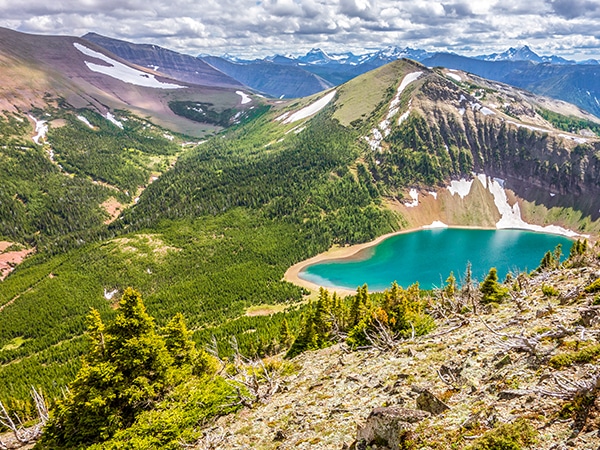
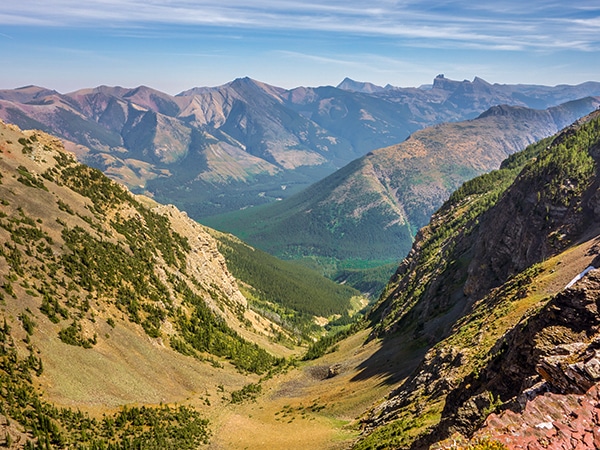
Camping near Castle Provincial Park
Camping is our preferred method of staying the night, and Castle Provincial Park has plenty of campgrounds for car camping and tent camping.
Syncline Group Camping Areas A and B are right off AB-774 and offer 20 sites each, in a grassy area right next to the West Castle River – perfect for fishing and wading. They’re open May through October 1st, and you’ll want to make reservations in advance.
An even more scenic spot is Castle River Bridge Campground. Open May 15th through October 15th, Castle River Bridge has 30 sites for both tents and RV’s, and reservations can be made up to 3 months in advance. You’ll be right next to the river, making it a good place to jump off for hiking and fishing.
Also check out Castle Falls Campground, located 6km off AB-774, next to mixed forest and gorgeous falls. There are 45 unserviced sites prime for pitching a tent for the night.
Lastly, check out Beaver Mines Lake. It has a total of 96 sites spread out, suitable for both RV’s and tents, and plops you right next to the lake for some excellent views; it’s only open until the beginning of September, however.
There’s a lot more campsites to choose from, so you shouldn’t have a problem snagging a spot you like somewhere in the park. Lynx Creek Campground offers first-come, first-served campsites.
Backcountry Camping
Backcountry camping is allowed virtually anywhere in the park, provided the you’re at least 1km from any road or structure, and at least 50 meters from any trail. Also, be sure to respect the land and leave no trace. Otherwise, bring that tent and turn any of these hikes into a killer overnight.
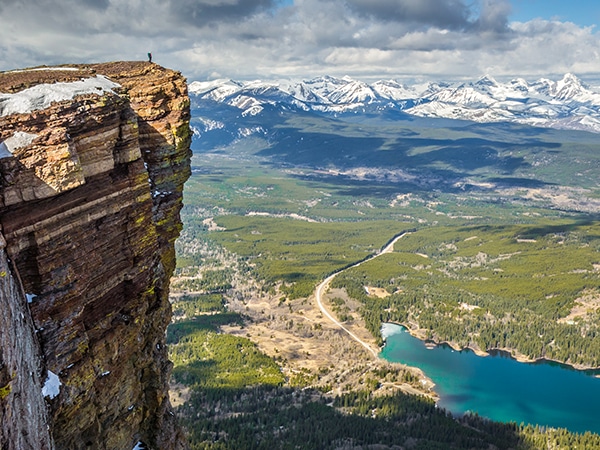

Where to Eat in Castle Provincial Park?
This is not a place for foodies, and the best meal you’ll get is the one you cook over your campfire as the sun sets.
That said, there are food options nearby. You can get a meal in Castle Mountain Resort, however, the opening hours are irregular, and often closed outside winter. When open, we love stopping by the T-Bar Pub and Grub, which serves pizza, wings and salads – typical pub food. Joe’s Café in the main lodge is your go-to for morning coffee and pastries, and the Day Lodge Cafeteria makes for a good pancake breakfast or deli sandwich for lunch.
If you’re staying in Pincher Creek, you’ve got a few more options – Antonio’s Pizza makes for a good casual bite, while Bright Pearl Restaurant is a fantastic local Chinese spot, with a huge, all-day buffet that will fill you up for lunch or breakfast. There’s more, too – Luigi’s Pizza and Steakhouse, A-1 Pizza and a host of fast-food options.
What to Do in Castle Provincial Park?
Winter
Downhill Skiing
Castle Mountain Resort is a mecca for powder hounds, and the lack of skiers, massive terrain and freak storms means it has a devoted following throughout Alberta. Castle Mountain Resort is on the side of Gravenstafel Ridge which reaches 2273 meters for 863 meters of vertical. They’ve got 94+ trails, 6 lifts and 2 terrain parks spread over 2 mountains and its 1454 ha get an impressive 9m (354 inches) of snow on average. Cat Skiing is also available.
There are also snowshoeing, XC Skiing and ski touring opportunities in Castle Provincial Park in winter, but they aren’t as well developed as in the national parks or in Kananaskis.
Snow Shoeing
Snowshoeing is allowed anywhere inside the park, unless otherwise noted. This is an awesome way to explore the park in winter, when many of the trails are buried deep in snow.
Cross-Country Skiing
In winter and early spring, the Syncline Trails offer fantastic XC skiing, winding through the mountains, forests and along the South Castle and West Castle rivers. There are plenty of old logging roads and fire roads, turning almost the entire park into a giant XC playground. You can rent skis from Castle Mountain Resort.
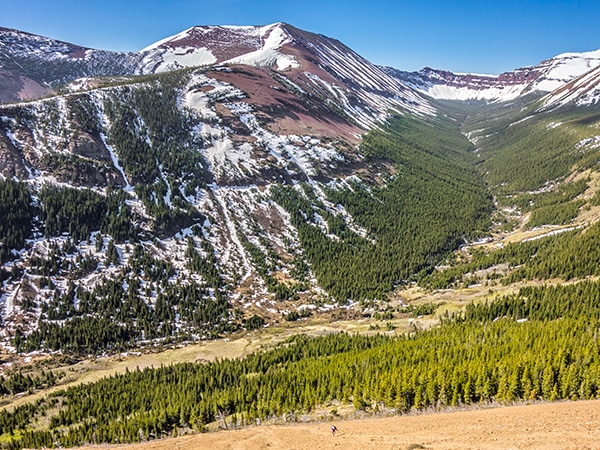
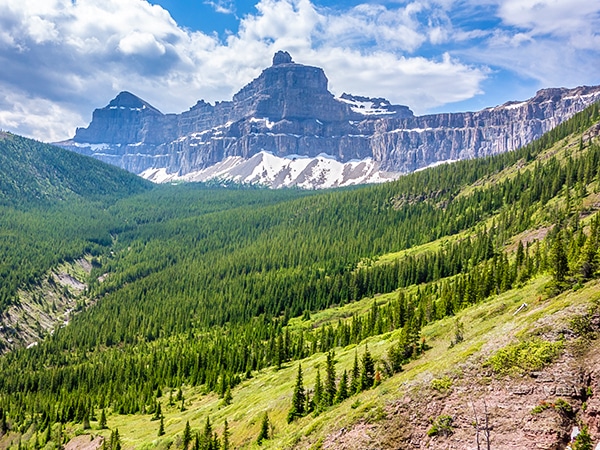
Summer
Hiking
When it comes to hiking, the possibilities are practically endless at Castle Provincial Park, from easy to difficult.
If you don’t mind some scrambling, you should tackle Table Mountain; it’s a 10.1 km hike from Beaver Mines Campground, with a mere 753 meters of gain. The reward? Epic views of countless Alberta summits. Table Mountain is Castle’s must-do hike and should be at the top of your list.
A much longer and more difficult climb would be Rainy Ridge, which climbs 1000 meters over the course of 24 km. You’ll be rewarded with epic views of Three Lakes Ridge, several alpine lakes and on a clear day, miles of horizon. There’s quite a bit of scrambling, and you’ll see tons of larch forests – making this an awesome choice for a beautiful autumn hike, where the changing foliage of the trees make the view even better.
For something easier, hike the Haig Lake Trail, 4.1km from Castle Mountain Resort to Haig Lake. It gains only 410 meters, so it’s a moderate effort, but the views and scenery are worth it.
Be warned, however, that many of these climbs are not well-marked, due to Castle’s lack of development. You’ll need to be skilled with map and compass to stay safe and on course. And, there will likely be snow at the higher elevations well into May. If you’re a beginner, stick to some of the flatter, easier trails.
And since backcountry camping is allowed virtually anywhere in Castle, you can turn any of the many hikes into overnights, piecing a few of them together to make a multi-day trip.
Mountain Biking
Come summertime, the Syncline Trails are prime for mountain biking – flowy and smooth enough for some fun but rugged enough for some challenge. Fat biking is permitted in winter, too, so you can get your MTB fix all year-round. The many logging roads and fire roads make for great MTB and fat biking, too.
Kayaking
If kayaking is more your speed, the Castle River runs right through the park, offering Class II and Class III rapids over a 15-km course. Castle Falls itself is a Class IV fall.
Fishing
The lakes, rivers and streams in Castle Provincial Park and Castle Wildland Provincial Park offer some of the best fishing in southwestern Alberta. Fishing is open from June 16 to October 31 and an Alberta angling license is required. Check Alberta Fishing Guide here.
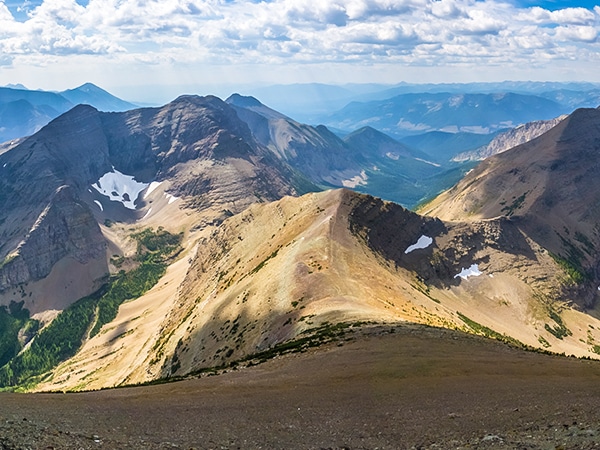
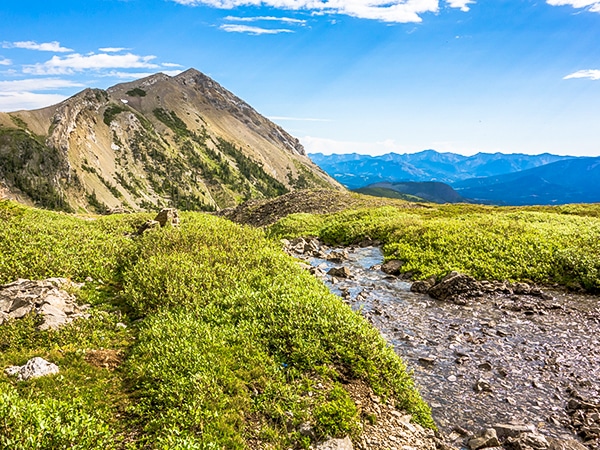
What Else to Know About Visiting Castle Provincial Park?
- There’s almost no cell phone coverage in the park; this is the real backcountry. You might be able to get some high up on the peaks, but don’t count on it. If you need contact with the outside world, bring a satellite phone or communication device.
- There are lots of cows grazing freely in the area. Keep an eye out and drive slowly on the roads, and don’t disturb them! Prairie dogs and deer are also plentiful.
- Dogs are allowed in the park boundaries but must be on a leash. There’s lots of wildlife in the backcountry to keep an eye out for and bears don’t mix well with dogs.
- Remember – the Rocky Mountains are known for summer thunderstorms. Keep an eye on the weather when out on exposed peaks, pack extra layers, and stay below the treeline if you see the weather turning.
Canadian Rockies Articles
Check out this list of articles to help you plan your next holiday in the Canadian Rockies. Get tips and valuable information that will turn your trip into an incredible adventure!
Trip Planning in the Canadian Rockies
- Planning your trip to Banff National Park
- Planning your trip to Canmore
- Planning your trip to the Icefields Parkway
- Planning your trip to Jasper National Park
- Planning your trip in the Kananaskis
- Planning your trip to Lake Louise
- Planning your trip to Waterton National Park
- Planning a Family trip to the Canadian Rockies
- Planning a Family trip to Canmore
- List of tours in the Canadian Rockies
Canadian Rockies Hiking and Camping Articles
- Best Dog Friendly Hiking Trails in Alberta
- Best Family Hikes in Banff National Park
- Best Family Hikes near Calgary
- Best Larch Hikes in Alberta
- Frontcountry Camping in Banff National Park
- Underrated Campgrounds in Alberta
Canadian Rockies Backpacking Articles
- Best Backpacking Trails for Families in the Rockies
- Best Backpacking Trails in Banff National Park
- Best Backpacking Trails in Canada
- Best Backpacking Trails in Western Canada
- Best Backcountry Campgrounds in Banff National Park

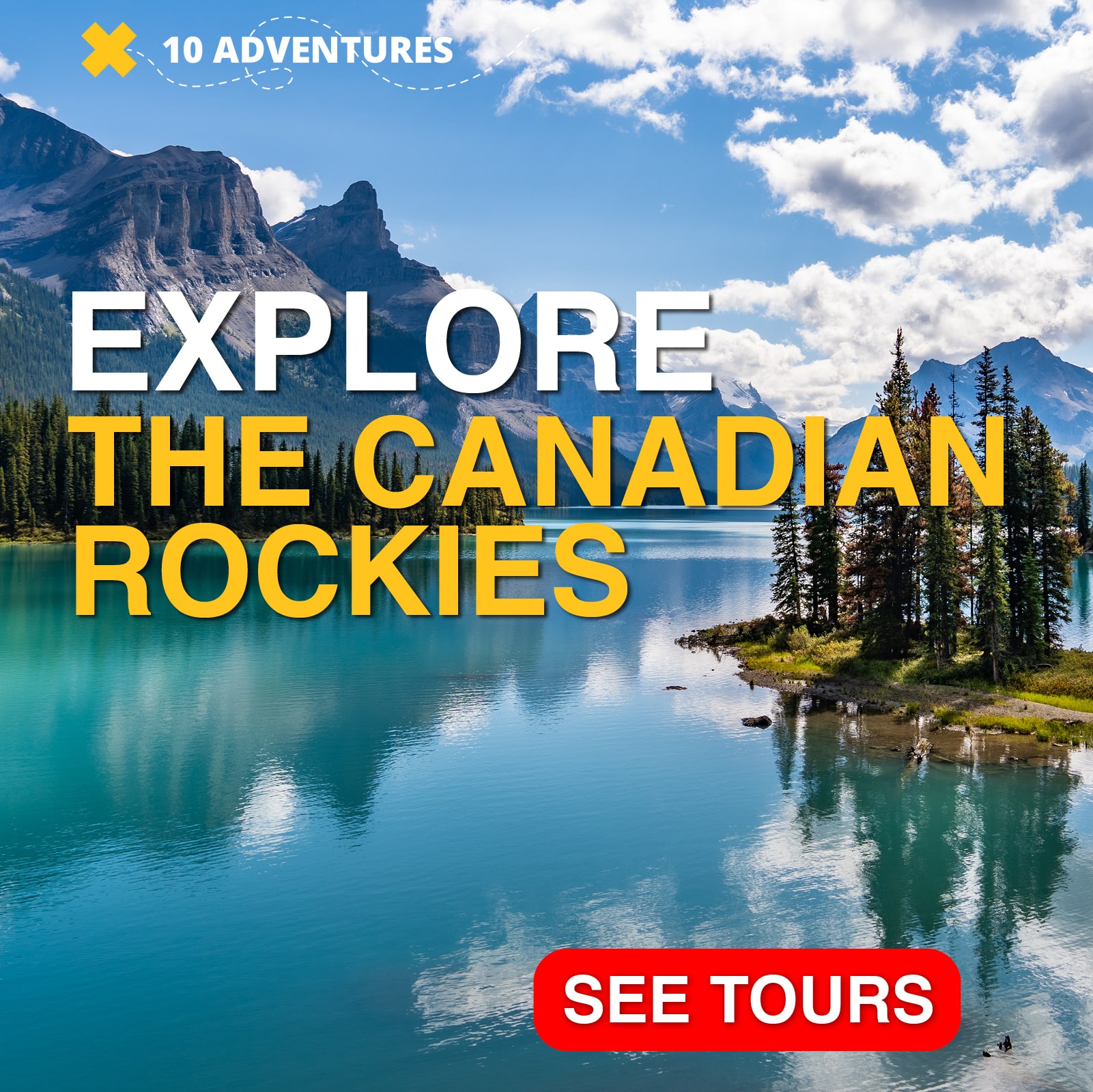


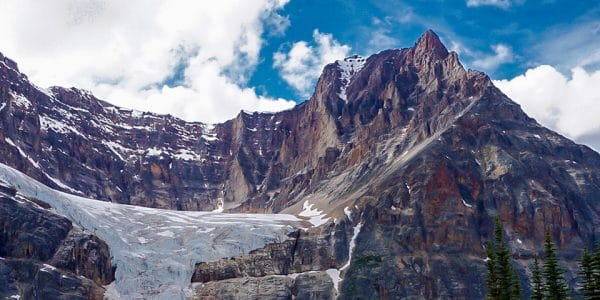
Comments